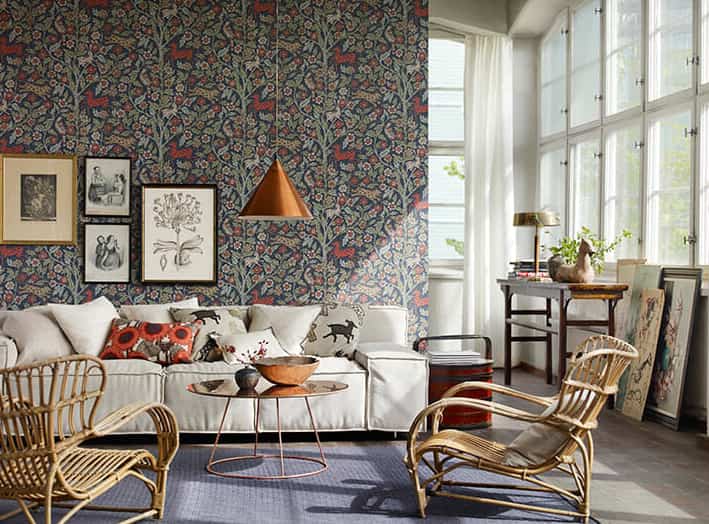The Role of Wallpaper in Interior Decoration
Interior decoration is a field that constantly evolves, adopting new trends and reviving forgotten ones to create spaces that are aesthetically pleasing and reflective of individual personalities and stories. One such enduring trend in the world of interior design is the use of wallpaper. Wallpaper plays a multifaceted role in decorating spaces, blending art, and psychology to transform rooms from mere areas of residence to personalised havens.
The Aesthetic Appeal of Wallpaper
Wallpaper brings an unparalleled aesthetic dimension to interiors. Unlike plain painted walls, wallpaper comes in a myriad of designs, patterns, and textures that can add depth and character to a room. The variety is endless, from bold geometric patterns that make a statement to delicate floral designs that bring a touch of nature indoors. Wallpaper can also serve as a piece of art, creating a focal point in a room or adding layers of visual interest that paint alone cannot achieve.
Functional Versatility of Wallpaper
Modern wallpapers are designed to be durable, easy to clean, and even noise-absorbing, making them a practical choice for both homes and commercial spaces. Some wallpapers are specifically made to resist humidity, making them ideal for use in kitchens and bathrooms. Furthermore, certain wallpapers can help conceal imperfections in walls, providing a cost-effective solution to achieve a polished look without extensive renovations.
Psychological Impacts and Atmospheres
Wallpaper does more than just decorate a space; it can significantly impact the mood and atmosphere of a room. For instance, blue tones and nature-inspired patterns can create a calming and restful environment, ideal for bedrooms or study areas. Conversely, vibrant colours and bold patterns can energise a space, making it perfect for living rooms or spaces intended for socialising.
Personalisation and Storytelling
Perhaps one of the most significant roles of wallpaper in decoration is its ability to personalise a space. With the vast array of options available, individuals can choose designs that resonate with their style, interests, or even memories. Wallpaper can tell a story, whether it’s a pattern that reminds one of a beloved vacation spot or a colour scheme that invokes a cherished memory.
Conclusion
Wallpaper is more than just a backdrop in the world of interior decoration; it is a transformative element that contributes to the overall essence of a space. It marries aesthetics with functionality while allowing for personal expression and psychological comfort. As trends in interior design continue to evolve, the timeless appeal of wallpaper ensures it remains a beloved choice for creating vibrant, personalised, and dynamic interiors.

